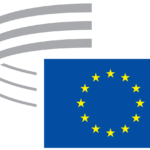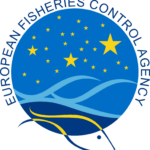This news item shows the evolution of the COVID-19 virus in Europe during November. The data for this article have been obtained from several official sources (Johns Hopkins University, Reuters, WHO…), concerning the incidence of diagnosed cases and deaths due to the COVID-19 virus.
In November, Europe ended with a total of 87,859,651 diagnosed cases and 1,551,873 deaths due to COVID-19. While in the month of October the average incidence of diagnosed cases was 151,875, in November the figure rose to a total of 188,377; this represented a monthly increase of 24.03%. In terms of deaths, October ended with an average of 5,680, compared to November, when the figure was 7,941, representing an increase of 39.81%.
Based on these data, many European countries have decided to take measures:
- On November 22 Austria imposed a nationwide containment for 20 days, in addition to mandatory vaccination.
- On November 25, Slovakia established a 90-day state of emergency.
- On December 1, Portugal proclaimed a state of calamity until March 20.
Countries with the highest average daily incidence of diagnosed cases
| October | November | ||
| Country | Average incidence | Country | Average incidence |
| United Kingdom | 166090 | Germany | 165889 |
| Russia | 129019 | United Kingdom | 151609 |
| Turkey | 113531 | Russia | 141183 |
| Ukraine | 70176 | Turkey | 98745 |
| Romania | 54600 | Ukraine | 74113 |
Según indica la tabla, el país con más casos diagnosticados medios diarios durante el mes de octubre fue Reino Unido con 166.090, seguido de Rusia (129.019) y Turquía (113.531). No obstante, en noviembre Alemania fue el país con mayor incidencia media diaria, contando con 165.889. Seguidamente están Reino Unido y Rusia con 151.609 y 141.183 casos medios diarios diagnosticados respectivamente.
According to the table, the country with the highest average daily diagnosed cases in October was the United Kingdom with 166,090, followed by Russia (129,019) and Turkey (113,531). However, in November Germany was the country with the highest average daily incidence, with 165,889. This was followed by the United Kingdom and Russia with 151,609 and 141,183 average daily cases diagnosed, respectively.
Countries with the highest average daily incidence of case deaths
| October | November | ||
| Country | Average incidence | Country | Average incidence |
| Russia | 4002 | Russia | 4592 |
| Ukraine | 1651 | Ukraine | 2544 |
| Romania | 1458 | Romania | 1190 |
| Turkey | 850 | Poland | 861 |
| United Kingdom | 531 | Turkey | 803 |
The table above shows the countries with the highest average daily incidence of deaths during the months of October and November. As can be seen, Russia, Ukraine and Romania were the countries with the highest average incidence of deaths in both months.
14-day cumulative incidence
Cumulative incidence indicates the spread of a disease in a population and in a given time. According to the Instituto de Salud Carlos III, it is calculated by dividing the number of cases appearing in a period by the number of people free of the disease at the beginning of the period. In this case, the number of people established was 100,000 inhabitants. The time period of 14 days has been established because experts point out that it is the time that best reflects the epidemiological situation of a territory due to delays in the notification of new infections and the time it takes for the virus to manifest itself in people.
There are five alert levels:
- New normal: Cumulative incidence <20.
- Low risk: Cumulative incidence is between 20 and 50.
- Medium risk: Cumulative incidence is between 50 and 150.
- High risk: Cumulative incidence is between 150 and 250.
- Extreme risk: Cumulative incidence >250.
The countries with the highest cumulative incidence during the first 14 days of November are shown below:
| Country | Cumulative incidence |
| Slovenia | 286 |
| Slovakia | 278 |
| Georgia | 249 |
| Croatia | 241 |
| Austria | 206 |
Slovenia and Slovakia were the countries with the highest cumulative incidence during the first half of November, with 286 and 278 cases diagnosed per 100,000 inhabitants respectively, placing these countries at an extreme risk alert level. On the other hand, Georgia, Croatia and Austria had 249, 241 and 206 cases per 100,000 inhabitants, placing them at a high risk alert level.
The following table shows the data for the countries with the highest cumulative incidence during the second half of November:
| Country | Cumulative incidence |
| Slovakia | 369 |
| Czechia | 315 |
| Austria | 275 |
| Slovenia | 253 |
| Netherlands | 234 |
Como se puede observar, la mayoría de los países (exceptuando Países Bajos), se encuentran en un nivel de alerta de riesgo máximo ya que su incidencia acumulada es mayor que 250. El país anteriormente mencionado, se encuentra en un nivel de alerta de riesgo alto debido a que su incidencia acumulada está comprendida entre 150 y 250.
As can be seen, most of the countries (except the Netherlands) are at a maximum risk alert level because their cumulative incidence is greater than 250. The country mentioned above is at a high risk alert level because its cumulative incidence is between 150 and 250.






Leave a Reply